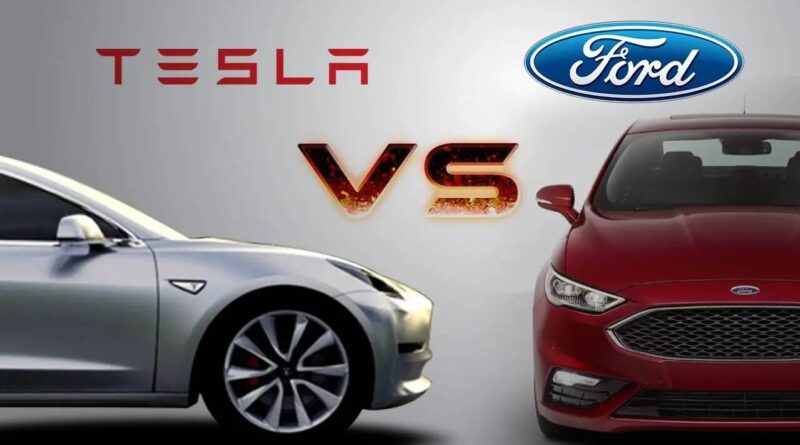The Tesla vs Ford stock competition has definitely intensified at the time of writing this, as market volatility and also the new auto tariffs are reshaping the automotive sector. Right now, Tesla (TSLA) trades at $267.20 with some analysts projecting a chance at reaching its one-year target of $487.93, while Ford (F) currently sits at $9.55, showing a recent decline of about 6.01%. These two automotive giants represent some fundamentally different investment approaches in today’s unpredictable stock market situation. Let’s compare them!
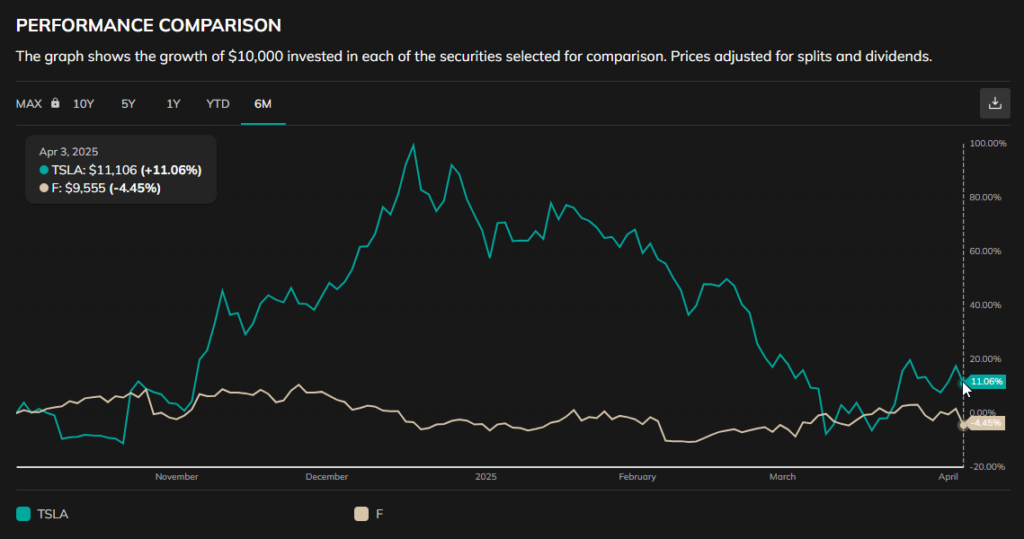

Also Read: Bitcoin: Why Did BTC Drop To A Low Of $81,000?
Tesla vs Ford: Analyzing Stock Volatility and the Impact of Tariffs on Investments


The Tesla vs Ford battle also highlights some really stark differences in their growth potential and also in investor appeal. The performance right now shows that Tesla was declining around 5.47% over five days, while Ford also dropped approximately 1.92% during the same period.
Risk-Adjusted Performance


When comparing the various risk metrics, Tesla presents higher volatility with an alpha of 2.07 and also a beta of 1.36, versus Ford’s alpha of 1.44 and beta of 0.66, which is somewhat lower in comparison.
Wedbush analyst Daniel Ives said:
“Tesla is facing a ‘fork in the road moment’ regarding Musk’s leadership and brand perception.”
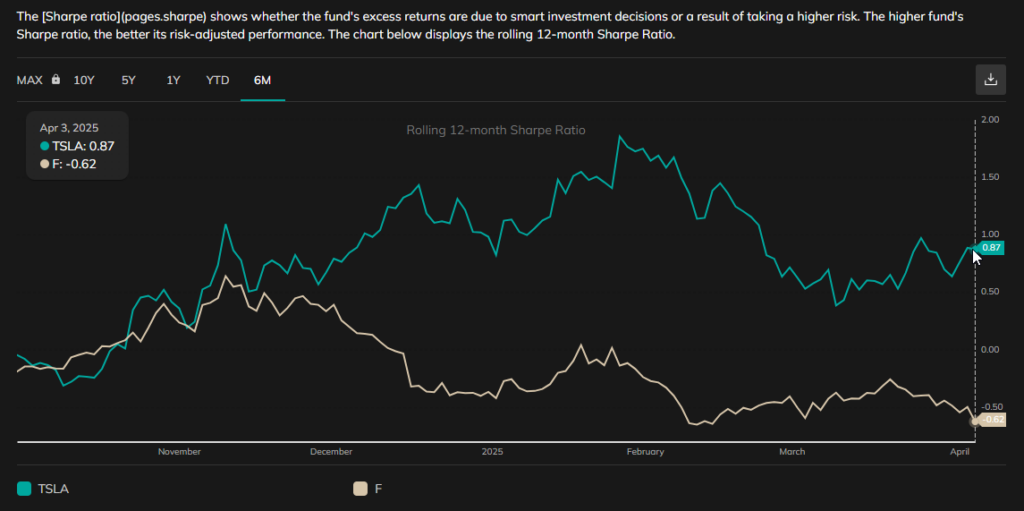

Dividend vs Growth Strategy


The Tesla vs Ford investment proposition is quite different when it cocmes to their estimated income potential. Ford actually offers approximately 4.44% dividend yield ($0.527334 per share TTM), while Tesla, on the other hand, provides no dividend at all, focusing instead on reinvestment into the company.
Also Read: Donald Trump Reacts to US Stock Market Crash, The President Says This
Tariff Response Strategies
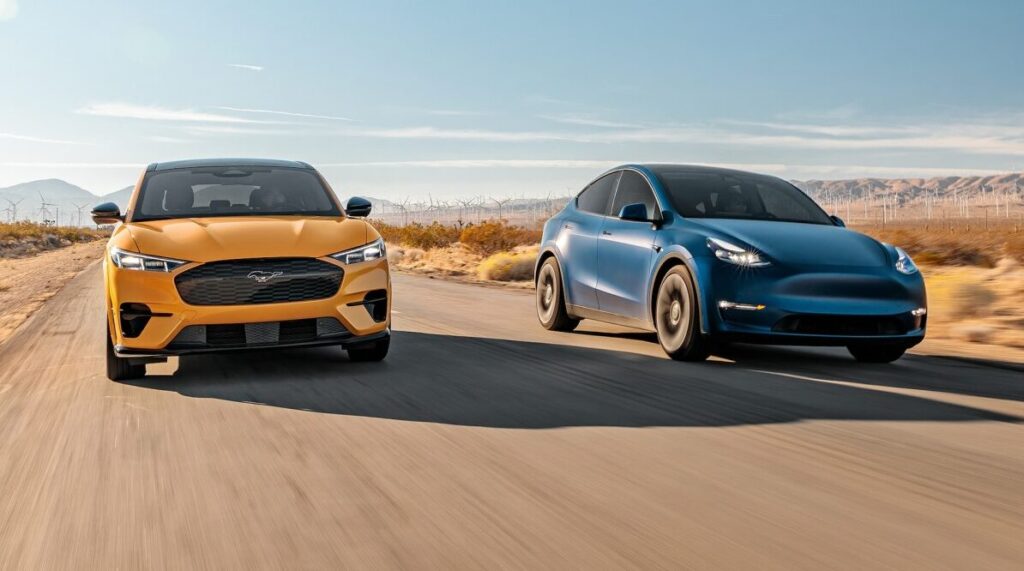

The 25% Trump tariffs have certainly affected both Tesla vs Ford stocks, though in somewhat different ways. Tesla shares fell about 4.7% following the announcement, while Ford, at the same time, dropped around 6.01%.
Ford’s aggressive response included immediate customer discounts and various incentives. For electric vehicles specifically, Ford has implemented additional benefits including home charger installation at no extra cost.
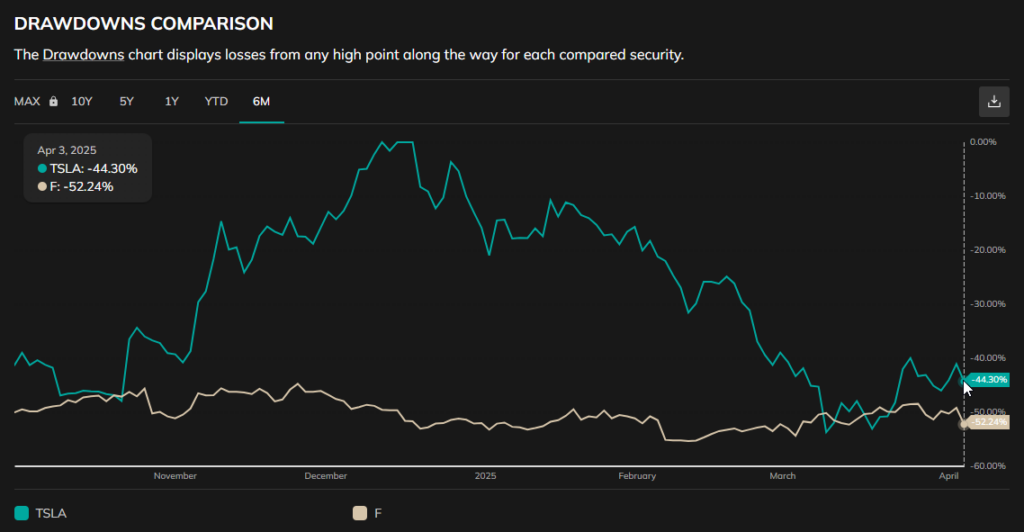

Tesla’s primarily domestic manufacturing provides some insulation from direct tariff impacts, though its global supply chain exposure still remains a concern for many investors.
Volatility Assessment
Market volatility shapes the Tesla vs Ford investment case rather substantially. At the time of writing, Tesla’s volatility measures around 2.63 compared to Ford’s 1.29, which creates a higher-risk, but also potentially higher-reward profile for investors.
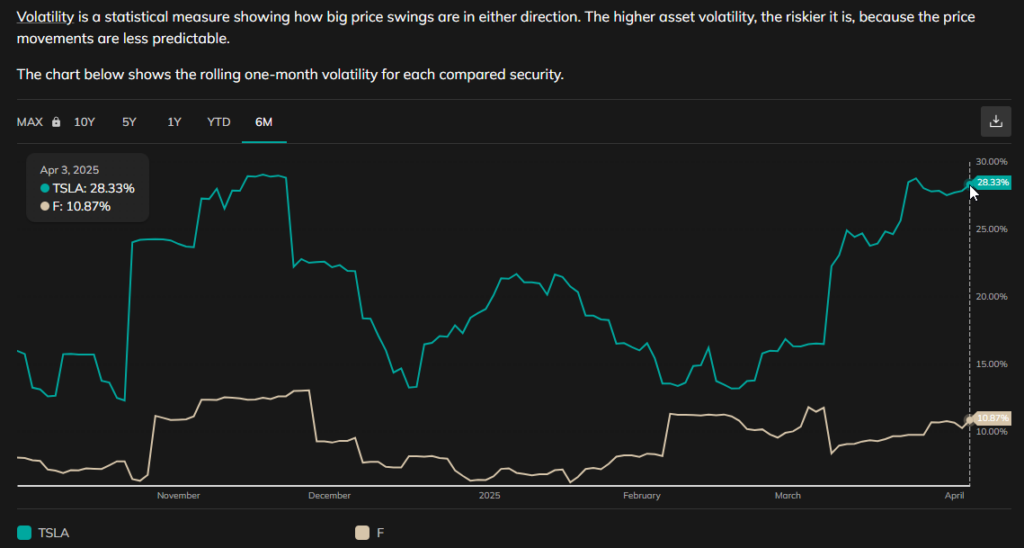

The correlation between these two automotive stocks remains relatively low at about 0.31, offering some potential diversification benefits for portfolio management.


Also Read: XRP at $2.07—Will It Crash or Hit $3.78? Analyst Predicts Next Move!
Tesla’s Q1 2025 delivery disappointment, with approximately 337,000 vehicles below analyst estimates, has definitely affected investor sentiment in recent weeks. The production challenges with the Model Y refresh have also contributed significantly to these delivery shortfalls.





